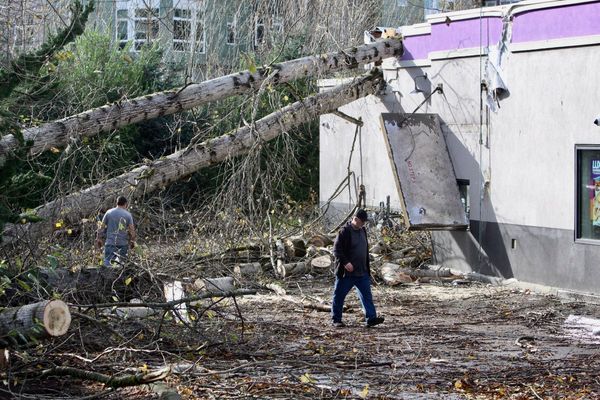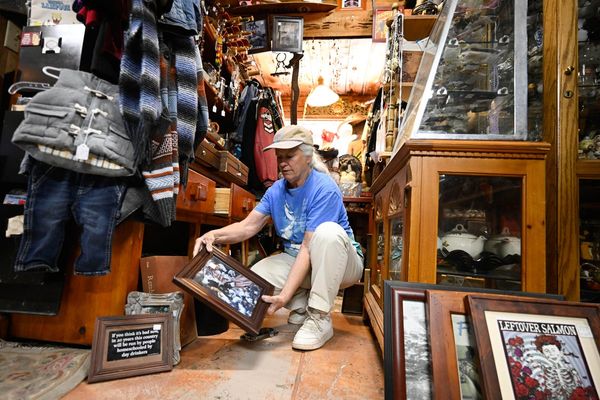CLIMATE change and land use change are contributing to the wildfires which have swept across Scotland, experts have said.
Over the last several weeks, the Scottish Fire and Rescue Service (SFRS) has battled dozens of wildfires across the country, with evacuations taking place in some areas.
Academics have warned that wildfires are simply “the new normal” in Scotland and will become a more frequent occurrence as a result of climate change.
What causes wildfires to start?
THERE are several conditions which make it more likely that a wildfire will start, such as high temperatures, windy conditions, a lack of rainfall and a lack of moisture in the air near the ground’s surface.
Zak Campbell-Lochrie, a lecturer in fire science at the University of Edinburgh, explained how the spring season between March and May is “generally always a peak wildfire risk” within Scotland and the UK.

“There’s quite a lot of dead vegetation such as shrubs and grass which can dry quickly under these hot, dry conditions, making it more prone to ignition.
“We’ve seen the SFRS warn people about the dangers of barbecues or taking extra precautions there. That’s because this dry vegetation is more vulnerable to ignition, and once an ignition does occur, it has the potential for much greater intensity of fire and a much quicker spread of fire.”
Campbell-Lochrie added this year had seen “particular challenges” due to the geographical spread of the wildfires, with some locations requiring evacuations.
He continued: “All of that means a real stretch on SFRS resources. They’re having to do all their usual work alongside responding to what can be quite time and resource-intensive fires to deal with.
“If you look at your broad climate trends going forward, those are certainly suggesting that we’re going to see greater severity and frequency of these extreme wildfire weather conditions in the future.”
Dr Michael Byrne is a reader in climate science and leads the Climate Dynamics lab at the University of St Andrews.
He told the Sunday National how alongside temperature and weather conditions, the amount of moisture in the ground also determines how easy it is for a wildfire to ignite and spread.
Dr Byrne explained: “Something that’s important for wildfires is how dry the air is near the surface. This is often quantified through the vapour pressure deficit (VPD), which describes how much moisture the atmosphere is demanding from plants and plant litter on the ground.

“Both of those effects lead to the atmosphere sucking more moisture out of plants and other debris on the ground, meaning that they’re more likely to catch fire and spread wildfires.”
However, Dr Byrne also acknowledged other factors away from climate change have contributed to the scale of the wildfires.
He continued: “There are other aspects to why these wildfires are occurring, including human behaviour, land management policies, and changes in land use which affect the fuel that’s available.
“There’s a whole question of how you manage the Highlands, but ideally you want to minimise the fuel that’s available to be burned.”
Dr Byrne told the Sunday National that there wasn’t yet enough data in Scotland to say “with a lot of certainty that wildfires are increasing”, but by looking at similar events in the western United States – which share a lot of geographic commonalities with Scotland – it is expected that wildfires will “become more frequent in Scotland as climate change continues”.
Dr Byrne added that “the world has it in its hands” to reverse climate change, but that action in the UK or Scotland alone would not be enough.
He continued: “From a climate change perspective, there’s not a whole lot we can do aside from limit our carbon dioxide emissions and try to slow down this increasing trend in temperature and dryness.
“The world has it in its hands to slow down and ultimately reverse climate change, but it’s not something that we can unilaterally take care of in Scotland or the UK.
“Given political changes, particularly across the Atlantic, I personally have limited optimism that we’re going to be solving that bigger climate change anytime soon.”
‘This is the new normal’
PROFESSOR Tahseen Jafry, director of the Mary Robinson Centre for Climate Justice at Glasgow Caledonian University, said that the wildfires Scots have seen over the last several weeks are “the new normal”.
She told the Sunday National: “We can’t get away from the fact that our climate is changing. We will all be affected, and not just us – it’ll be the future generations who bear the brunt of it.
“We see these periods of interest in this, as we’re experiencing just now. Conversations about our changing climate erupt and become of national interest and significance because it’s suddenly very warm, and then it tips away.

Jafry added that the focus needs to shift towards “how those who are most vulnerable are going to adapt”.
She said: “We’re living in a cash-flat economy, which makes it even harder to be able to make small changes in our daily lives.
“We’re all being asked to get heat pumps, use different modes of transport, get electric vehicles and so on. For a lot of people and communities – and particularly those most vulnerable – putting food on the table is what’s most important.
“It’s about trying to navigate our way through how the conversations around climate change fits within the daily lives of ordinary people.”
Jafry continued: “It’s really important that justice, inequality and equity are considered front and centre when we’re looking at this.
“We need to take everybody with us on this journey and be really inclusive and meaningful in our conversations so that we’re all on the same page, but I don’t think we’re anywhere near that at all.”
Several organisations and climate campaign groups have called on the Scottish Government to act on accelerating a just transition away from oil and gas, and investing more into Scotland’s fire service budget.
Caroline Rance, head of campaigns at Friends of the Earth Scotland, told the Sunday National: “These wildfires must serve as another alarm bell to our governments that the climate crisis is already on our doorstep and demands urgent, transformative action.
“It has been a year since the Scottish Government scrapped climate targets and we haven’t seen any action to make up for its failings. The Government must rapidly speed up, and fund, the transition away from oil and gas and towards publicly owned renewable energy to power our homes and transport.
“The longer the Scottish Government delays taking action, the more we will see frightening fires like this, and the worse they will become.”
Anne McCall, director of RSPB Scotland, highlighted the need to protect the landscape and biodiversity of the Highlands in particular.
McCall said: “Improving the quality of upland habitats – including restoring vital peatlands, re-wetting formerly drained areas and introducing much greater habitat variety into the landscape – will reduce the risk of wildfire, and bring further benefits such as reducing downstream flood risks.
“It is critical that we accelerate the pace of work to restore our uplands and improve biodiversity at a landscape scale to help build resilience in the face of these human-driven disasters.”
John McKenzie, Fire Brigades Union (FBU) Scottish secretary, said: “The wildfires of the last week are the clearest evidence of the need to invest in the staffing, equipment and training required to prevent wildfires and protect firefighters and communities from them.
“However, over the last 12 years, more than 1250 firefighter posts have been lost and tens of millions of pounds have been cut from the Scottish Fire and Rescue Service budget. The Scottish Government must provide urgently required additional funding to ensure that firefighters can tackle incidents such as wildfire effectively.”
Community Safety Minister Siobhian Brown said: “As has been shown in recent days, the Scottish Fire and Rescue Service (SRFS) is fully prepared to respond to wildfires and I am grateful to them and other first responders for their outstanding efforts to keep people and property safe.
“We continue to work with SFRS to support the implementation of its three-year wildfire strategy, which will see the continued roll-out this year of new equipment, vehicles and Personal Protective Equipment (PPE).
“This year’s Budget includes £412.2 million for SFRS – an increase of £18.8m – and Scotland continues to have more firefighters per capita than other parts of the UK.”







